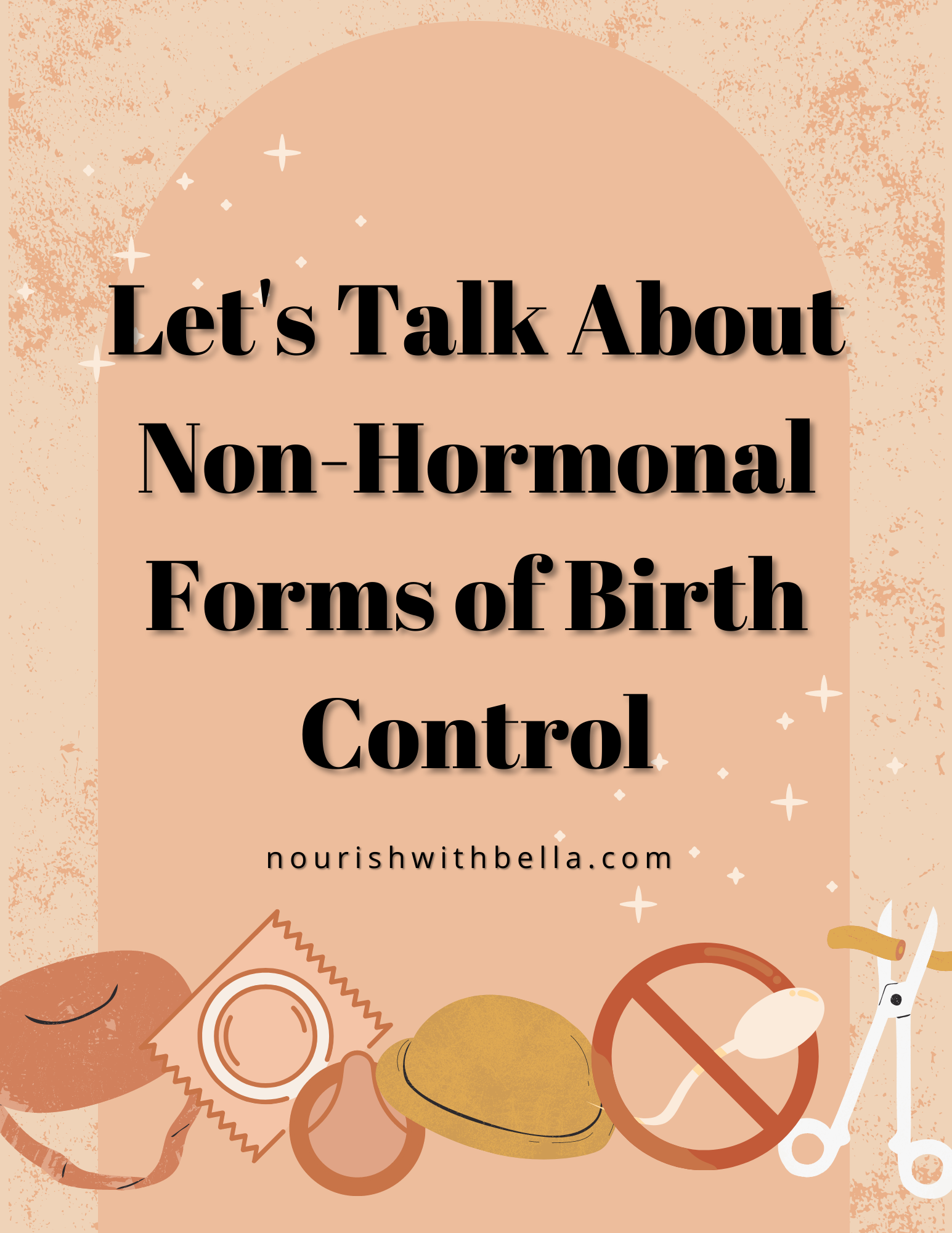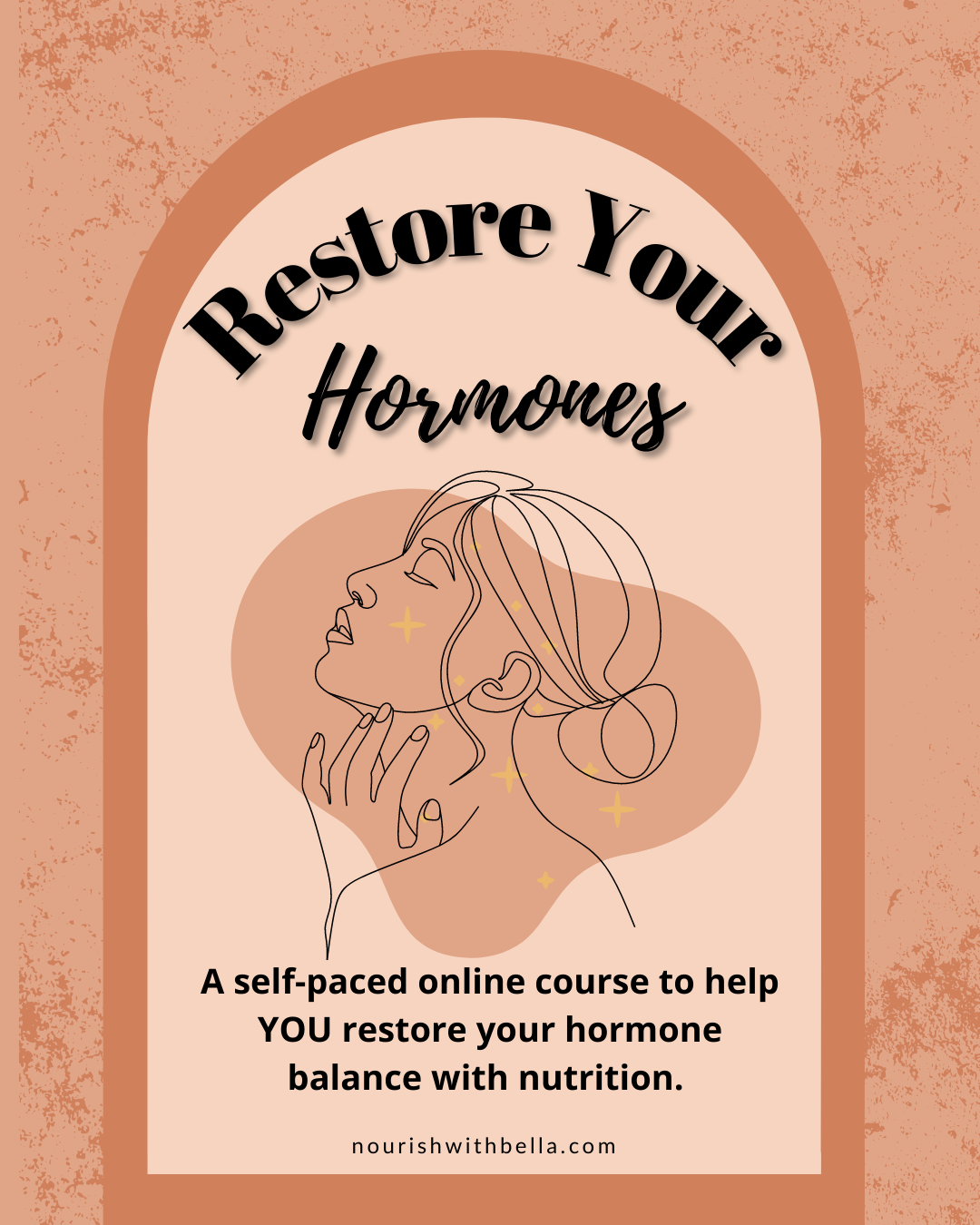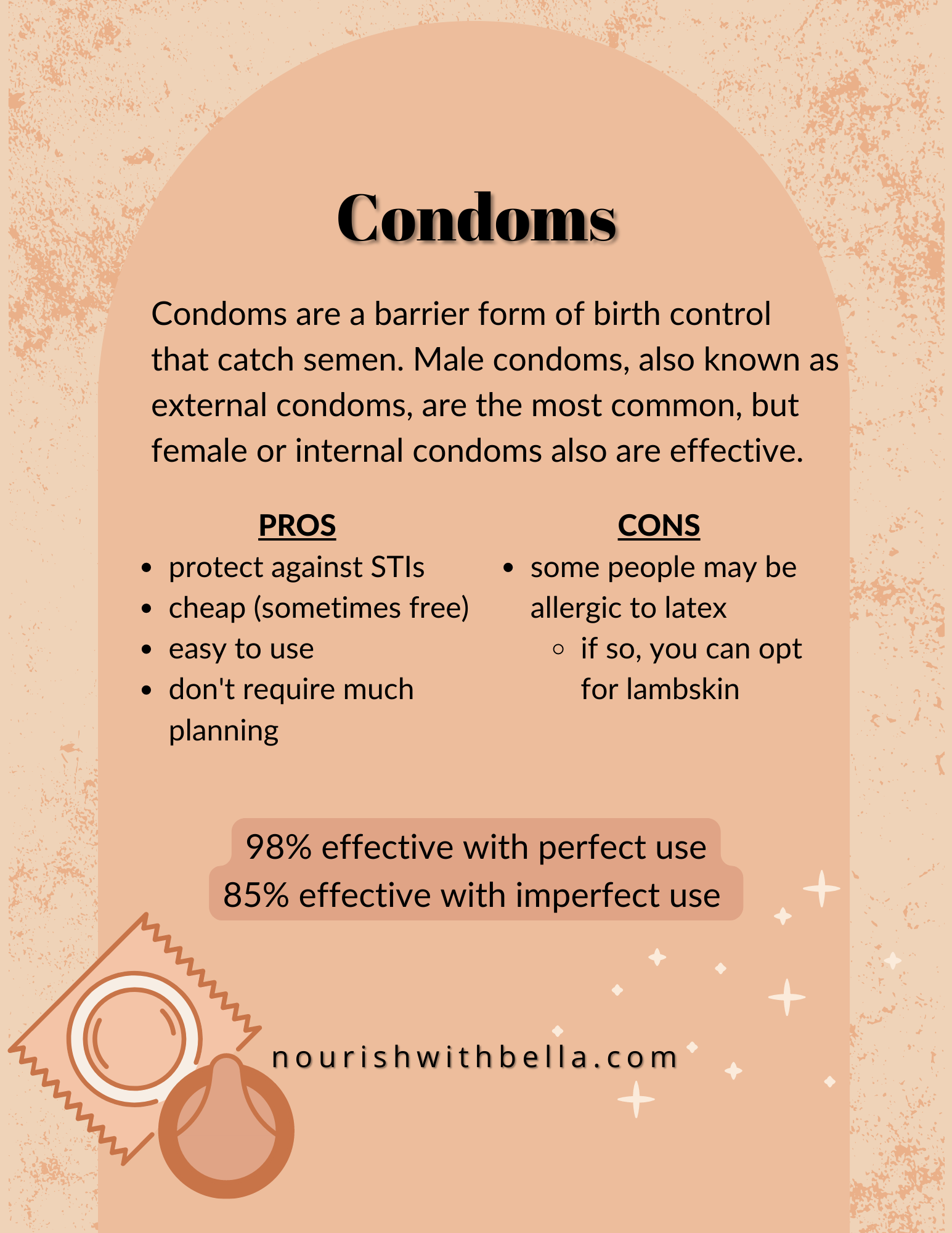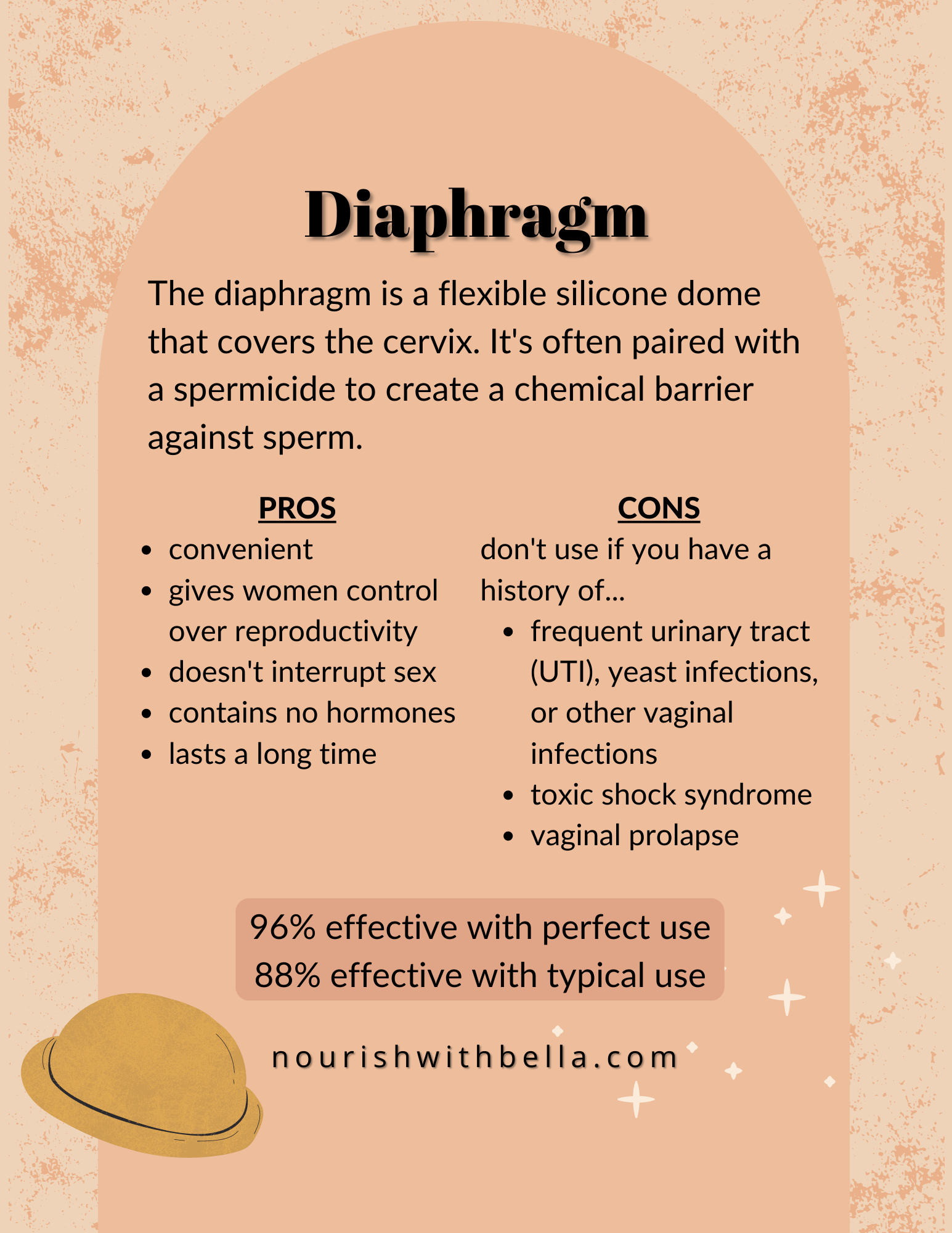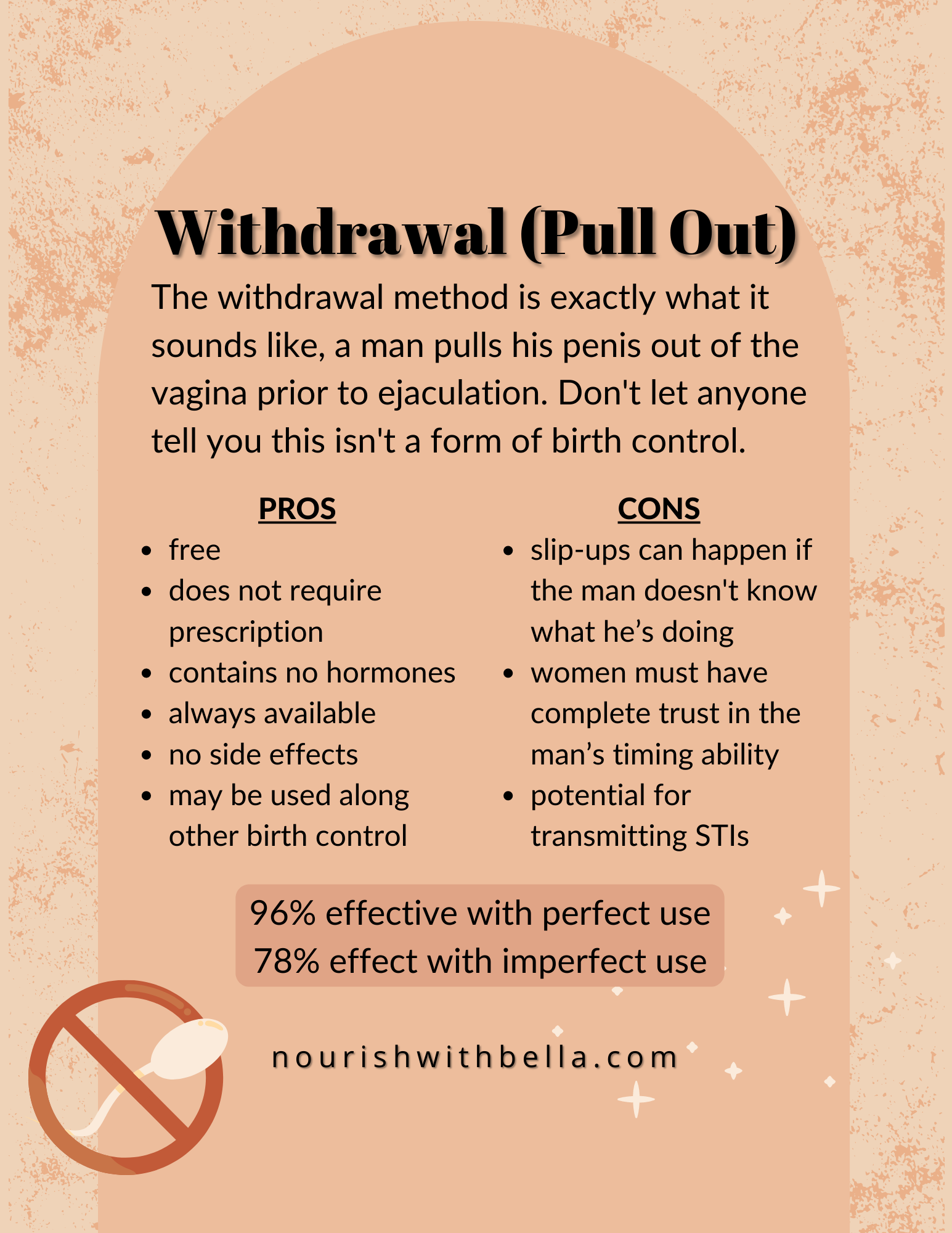Non-Hormonal Forms of Birth Control
In my last blog, we discussed all the different forms of hormonal birth control, the potential symptoms, hormonal imbalances, nutrient deficiencies and more. You can read that post HERE.
If you’re like most women, you may have tried some form of hormonal birth control, like regularly taking the pill to avoid pregnancy or as a doctor-prescribed treatment for a hormonal imbalance. But, hormonal birth control DOES NOT fix or regulate your cycle. It simply suppresses symptoms.
To actually heal and resolve your hormonal imbalances, you must identify and treat the true root cause. In my online course, Restore Your Hormones, this is exactly what we do. Learn more about the course HERE.
Restore Your Hormones
Learn how to finally balance your hormones naturally with nutrition, supplement, and lifestyle changes in this online course.
If you're reading this article, you likely have tried some form of hormonal birth control and possibly developed some unwanted symptoms, like painful or irregular periods, acne, depressions, anxiety, mood swings, nausea, headaches, low sex drive, fibroids, or even stroke.
When discussing the symptoms and danger associated with hormonal birth control, the most common next question is what are the alternatives?
This post focuses on the different forms of non-hormonal birth control, how to use them, healthy benefits, potential downfalls, effectiveness with perfect use, and efficacy with typical use.
Condoms
Condoms are a barrier form of birth control that catch semen. Male condoms, also known as external condoms, are the most common, but female or internal condoms also are effectively used.
Condoms not only prevent pregnancy but also protect against sexually transmitted infections (STIs). They're also cheap, sometimes even free, easy to use, and don't require much planning. Potential downsides are most condoms are made of latex, which some people may be allergic to. If you or your partner are allergic to latex, you can opt for lambskin versions.
When used correctly, condoms are 98% effective. Slip ups can happen though and drop to 85% effective with imperfect use. (1)
Diaphragm
The diaphragm is another barrier form of birth control. A diaphragm is a flexible silicone dome that covers the cervix. It's often paired with a spermicide to create a chemical barrier against sperm.
The diaphragm has many benefits: it’s convenient; it gives women control over reproductivity; it doesn't interrupt sex; it contains no hormones, and it lasts a long time. It does take some skill to learn how to use a diaphragm comfortably and effectively, but it can easily be mastered with practice. Some potential considerations why not to use a diaphragm include experiencing frequent urinary tract (UTI), yeast, or other vaginal infections; having suffered from toxic shock syndrome; experience discomfort when in place, or having experienced vaginal prolapse, female pelvic floor muscles and ligaments weaken resulting in the uterus protruding out of the vagina.
With perfect use the diaphragm is 96% effective and 88% effective with typical use. (1)
Sponge
The sponge is a barrier form of birth control. It's a wide foam disc filled with spermicide and has a fabric loop attached for easy removal.
Benefits of the sponge include it can be purchased over the counter, does not require a prescription, safe to use while breastfeeding, and does not use hormones. Some potential downsides include it must be left in place for 6 hours after sexual activity to be effective. The sponge is also less effective than the diaphragm, so I would recommend the diaphragm over the sponge if you're serious about avoiding pregnancy.
The effectiveness of the sponge depends on if you’ve had a baby or not. If you've never been pregnant, the sponge is about 88% effective. If you have been pregnant in the past, the sponge is 76% effective. (1)
Withdrawal
Do not let anyone tell you withdrawal is not a form of birth control. It may not be as effective as other forms of non hormonal birth control but quite efficacious if practiced prudently.
The withdrawal form of birth control is exactly what it sounds like. Your male partner pulls his penis out of your vagina prior to ejaculation.
Some of the benefits of the withdrawal method is it's free, does not require a prescription, contains no hormones, always available, has no side effects, and may be added to other forms of birth control to increase effectiveness. Downsides of the withdrawal method include slip-ups can happen if the man doesn't know what he’s doing, so women must have complete trust in her man’s ability to withdraw his prick properly. The potential for transmitting an STI also exists using the withdrawal method.
This form of birth control is surprisingly more effective than most sex educators would tell you. With perfect use, it's 96% effective. However, if your male partner struggles timing his ejaculations, the withdrawal method effectiveness drops to 78%. (2)
Sterilization
Two forms of sterilization predominate: tubal ligations for females and vasectomies for males. Tubal ligation is a procedure that involves cutting and tying the fallopian tubes to permanently prevent pregnancy. Vasectomy involves cutting and sealing off the vas deferens tube, a man’s sperm duct. Getting your tubes tied or ducts snipped remains permanent, even though reversal is sometimes possible, results are not always successful.
The benefits of tubal ligation include it’s the only permanent form of birth control, and it’s highly effective with only 1% chance of getting pregnant. On the other hand, there are many potential cons of tubal ligation, including the possibility of an ectopic pregnancy, doesn't prevent against STI’s, surgery comes with inherent risks, such as bowel injury, hemorrhage or blood transfusions, and the potential of developing post tubal ligation syndrome (PTLS). Some symptoms of PTLS include hot flashes, night sweats, vaginal dryness, mood swings, trouble sleeping, lower sex drive, and irregular, heavy, or painful periods.
The benefit of a vasectomy is its permanence. The procedure is relatively quick and easy, relatively low cost, and 99% effective. However, potential downfalls include it does not protect against STIs, increased risk of developing prostate cancer, may cause internal bleeding/hematoma, may cause depression leading to erectile dysfunction, and potential risk of developing post-vasectomy pain syndrome (PVPS). Some symptoms of PVPS include pain and tenderness in the scrotum, pressure or pain after ejaculation, dull ache in one or both testicles, pain and tenderness at the site of the vasectomy, swelling of the tube behind the testicle where sperm are stored, and pain with sex. For some, this pain eventually goes away, but for others, it lasts a lifetime.
Tubal ligation is 99% effective, but a 7% chance of an ectopic pregnancy exists, a fertilized egg implanting outside the uterus. Vasectomies are 99% effective. (1)
Copper IUD
The copper IUD is a small T-shaped plastic device wrapped in a copper coil and inserted into the uterus by a physician. The copper coil releases copper ions locally into the uterus and creates an inflammatory environment becoming toxic to sperm and prevents fertilization. The copper ions change the lining of the uterus and cervical mucus making implantation nearly impossible. Copper also changes the natural microbiome of the vagina, making the environment less optimal for sperm survival.
The copper IUDs’ main benefit is its effectiveness. It also allows you to ovulate, therefore you can still reap the benefits of producing progesterone. You can insert it and forget it; it lasts a long time, and it’s free of hormones. However, it comes with a slew of potential side effects. The most common side effect of the copper IUD is increased menstrual pain and heavier flow. Other serious potential side effects include pain when inserted, increase risk for vaginal infections, estrogen dominance, hormonal imbalances, copper toxicity, pelvic inflammatory disease, permanent infertility, pain with sex, cystic acne, and potential expulsion from the uterus or proliferate into the side of the uterus.
The copper IUD effectiveness is 99%. (1)






Fertility Awareness Method (FAM)
The fertility awareness method is a non-hormonal and non-invasive form of birth control. Note that fertility awareness and the rhythm or calendar method are NOT the same. The calendar method only uses specific days to predict ovulation, whereas fertility awareness uses basal body temperature, cervical mucus, and cervical position to identify and confirm ovulation. I will go into more detail about FAM and how to perform it correctly and effectively in my next blog post.
Learning about FAM helps you better understand how your body works, requires no synthetic hormones, is completely non-invasive, requires no prescription, and results in no negative side effects when compared to hormonal birth control and the copper IUD. FAM also helps increase communications between partners, and when you want to get pregnant, you'll have a better understanding of how to conceive. The only potential disadvantage of FAM is not properly learning and using this method. That’s why it is essential to take a few months to learn it before use, and both partners must be dedicated to using this method. Irregular periods are more difficult to track yet still possible. FAM provides no protection against STIs.
When performed correctly, FAM is 99.3% effective! I love the odds. However, if women are not diligent about tracking, effectiveness drops to 87%. (3) That said, I personally have used this form of non-hormonal birth control for over four years and have never had a pregnancy, but I’m very confident that when I am ready to get pregnant, I will. I know my own body now. This is my preferred method of birth control and the one I advocate for all women to learn more about.





This post helps you understand you don't need synthetic hormonal birth control to avoid pregnancy or to keep your natural hormones in balance. In fact, no synthetic hormonal birth control actually balances your hormones. They suppress your symptoms.
If you truly want to identify and treat the root cause of your hormonal imbalances, check out my online course, Restore Your Hormones. This course reviews the two most common hormonal imbalances, ways to test at home, and tons of nutrition information, including how much to eat, how often to eat, information on all three macronutrients, dairy, fiber, minerals, vitamins, and supplements. Lastly, the course has a 6-phase guide to help you implement all the information given in a streamlined way, along with a guide to specific symptoms, meal guides, recipes, habit tracker, and more! Learn more about the course HERE.
If you have any questions about non-hormonal birth control, please leave a comment below or send me an email at bella@nourishwithbella.com
Bella
References
Hatcher RA. Contraceptive technology 20th edition. 2015.USA: Bridging the Gap Foundation and Mimi Zeiman.
Center for Disease Control and Prevention (CDC). US medical eligibility criteria (US MEC) for contraceptive use [Internet]. Last reviewed Feb. 1, 2017 [cited 2022 Feb 7] Available https://www.cdc.gov/mmwr/volumes/65/rr/pdfs/rr6503.pdf
NHS. (13 April 2021). Natural family planning (fertility awareness). NHS choices. Retrieved from https://www.nhs.uk/conditions/contraception/natural-family-planning/

